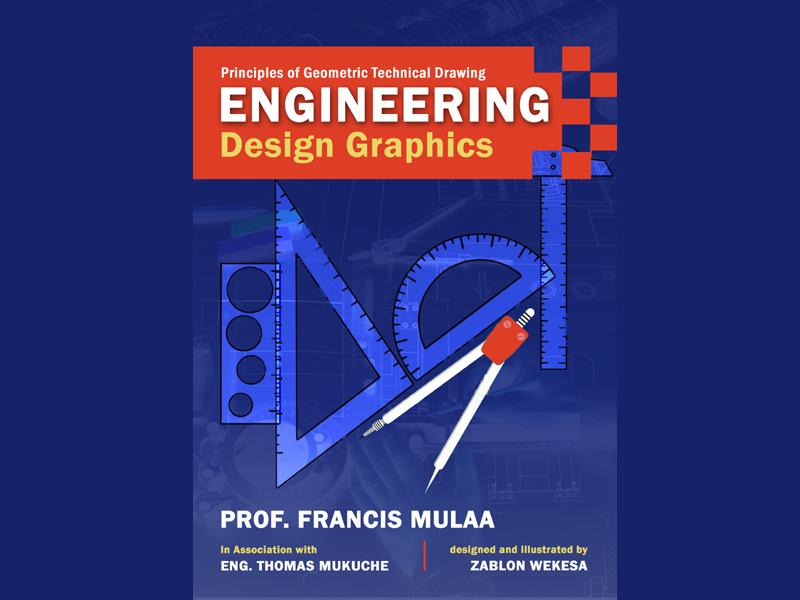 Image
Image
Book review: A primer for understanding geometric technical drawing and engineering design
As the name suggests, 'Principles of Geometric Technical Drawing: Engineering Design Graphics' is aimed at students and professionals interested in geometric and engineering drawing.
An engineering drawing involves a lot of technicalities which helps to convey several information about an object.
If those steps are followed properly and with prior knowledge, designs can be accurately made like a professional.
One effective guidebook is what the engineers need to go ahead with the procedure without any problem.
Written by University of Nairobi's Distinguished Professor Francis Mulaa, in association with engineer Thomas Mukuche, and designed by Zablon Wekesa, this course book and accompanying exercise books tell you everything about technical drawing, which instruments to use, which techniques to follow to name a few.
Every instrument, technicalities, rules are described in detail so that everyone can clearly understand them.
Divided into several sections, this book explores the key characteristics of engineering drawings, design and their fabrication.
The compartmentalisation of the chapters has been done keeping in mind the basics of engineering drawings and also for the ease of the readers.
Each heading deals with a different subject, which is thoroughly explained by the authors.
Graphical work, drawing in a right-angle position, rule of placement, localized views, axionometrical projections, shading techniques, geometrical objects are some of the important topics that you can find here.
This useful book also shows you the technology of design with the help of computer graphics.
There are multiple illustrations throughout the book, which will make it easier for all the readers to understand.
Starting from which paper to use and which pencil suits the best, the book revolves around answering every question that you may have regarding this subject.
Questionnaires are also available in between for easier understanding of the usages of all the instruments and the formats.
The detailed writing, in lucid style, along with the figures explaining them, is a perfect combination for every student and others who want to explore this field.
When the basics become strong, the outcome is bound to be positive, isn’t it?
(Reviewed by Sayantani Sengupta)
Top Headlines
-
Literary
A Defiant Voice Remembered: Jyotsna Mohan at The Write Circle, Dubai
September 27, 2025
-
Literary
Feminist pioneer Abala Bose was both a subscriber and critique of colonial ideas: Author Saptarshi Mallick
August 26, 2025
-
Literary
The Sona Story: The Textile to Tech Journey of Chettiar Industrialist C. Valliappa
April 22, 2025
-
Literary
The Sona Story celebrates life, legacy of C. Valliappa
April 05, 2025
-
Literary
Acclaimed Author Soma Bose continues to inspire with her powerful storytelling
March 07, 2025
-
Literary
Terrorists behind Nagrota attack had a jihadi sentiment: 'Nagrota Under Siege' author Bhaavna Arora
February 26, 2025
-
Literary
I am a lifelong Felu-da fan, says Arindam Basu unveiling truth-seeker Prithviraj's intriguing world in 'The Calcutta Covenant'
February 18, 2025
-
Literary
Women decide Indian politics now: Veteran journalist Rajdeep Sardesai at Kitaab talk in Kolkata
January 12, 2025
-
Literary
Srijit Mukherji, Swastika Mukherjee launch author Soma Bose's second book 'Ive Had Enough of You'
November 23, 2024
-
Literary
Kolkata hosts the 3rd edition of Chitra Devi Music & Dance Festival
September 19, 2024
